Traditionally technical roles (think the CIO, CISO, and Chief Digital Transformation Officer) have moved closer to the boardroom over the past few decades, as organizations have increasingly recognized the importance digital strategies play in improving operations, enhancing customer and employee experiences, and driving results.
Now, we’re starting to see that same strategic business-enablement shift in IT.
IT teams, historically a technical function that spent hours a day chasing down tickets or solving one-off device or application performance issues, are looking for ways to upskill and empower themselves in a more competitive AI era.
Making sure technology works – this laptop is operational, an application is functional, a device is connected to the printer – is no longer the only benchmark for IT. IT teams and CIOs are responsible for supporting the entire digital experience for the end user (whether that be inside their organization, or a broader client base) – one that’s inclusive of a wide variety of endpoints employees must be able to access and operate 24/7.
It’s Hard to Find Time to Get Ahead
70% of employees use four or more endpoint devices each day, and the average IT-to-employee ratio ranges from 1:25 to 1:200. Ensuring that every end-user has the best and most productive digital experience possible (on each device they’re using for work) is critical for not just the organization’s performance and security, but also for employee retention and engagement.
But that’s a tall ask for IT professionals, who are often severely outnumbered and chronically overworked. They must ensure that each device and system is operational and easy to use 100% of the time, regardless of where in the world it operates. And amid budget scrutiny in an uncertain economy, IT teams are forever being asked to do more with less. Not to mention that they’re constantly being challenged to balance these nearly impossible expectations while also looking for ways to uplevel and future-proof their own careers.
The good news? Automation continues to play a central role in helping IT be even more effective in their work. It can enable them to be more strategic in what they take on and afford them new opportunities to manage, demonstrate business value, and grow in their roles.
How to Leverage Automation and AI to Level Up
Those who know where and how to practically, safely and successfully apply AI to streamline menial tasks and automate workflows will be the ones who are best able to drive time and cost savings for their team and the organization.
When it comes to thinking about where automation can help in IT, consider:
- Where are you spending most of your day? Patching, troubleshooting, backing up devices? Can you offload these activities or use automation to help expedite them? Even a 5-10% time savings a day can lead to huge productivity boosts.
- What high-volume, repetitive, and rules-based tasks could be easily automated? Implementing AI in these areas will be some of the easiest ways to gain internal buy-in to expand and incorporate new use cases.
It’s equally important to consider risk and security when it comes to AI adoption. Not all automation or AI-enabled capabilities are fit for purpose. AI can still make mistakes, and IT teams deal with so many functions critical to their organizations’ operations and success. That’s why it’s essential to have humans involved instead of having AI take action on its own. The impact of AI making the wrong decision in IT is too high.
For example, patch management is an imperfect process, and occasionally, issuing patches just because they’re available can cause more harm than good. Consider leaning into solutions that automate the most basic processes – like identifying and recommending which patches are most effective and urgent – but still keep humans in the loop, relying on them to approve AI’s recommendations before allowing action. You’ll want to steer clear of capability sets that fully hand over the keys to the robots, so to speak. This approach frees up IT’s time and resources to work on other strategic priorities, while minimizing the risk of AI making a detrimental mistake.
But with more tools on their technology stacks, more devices on their endpoint estates, and emerging AI developments adding new levels of complexity to IT environments, time is money for IT teams. The less time they can spend addressing repetitive, laborious tasks, the more time they’ll have to be proactive in improving end-users’ experiences while also getting ahead in their careers.
The role of the IT professional is as critical as ever. But in a world where so much is constantly being thrown their way, there are better means for organizations to add even more value to their people. Automation can be extremely beneficial in helping IT teams get and stay ahead, unlocking even more growth and innovation opportunities, both professionally and for their organization.

